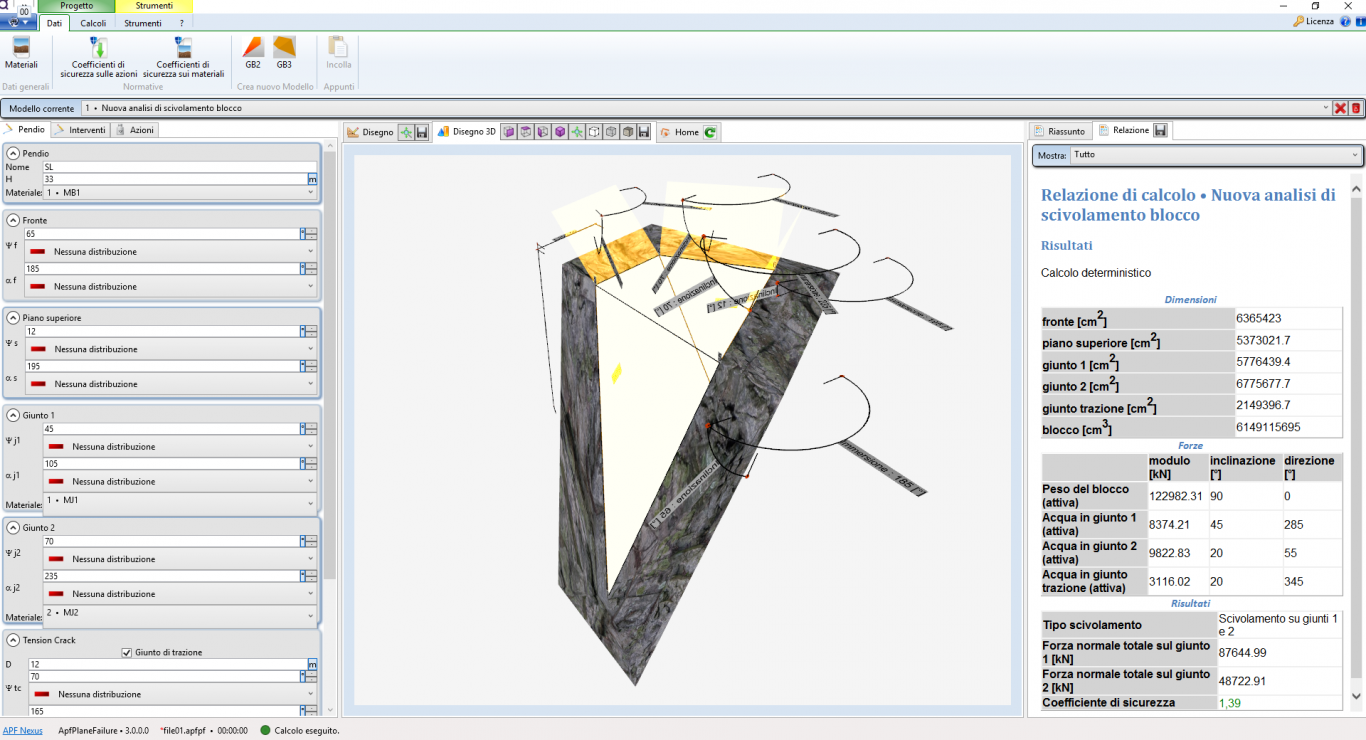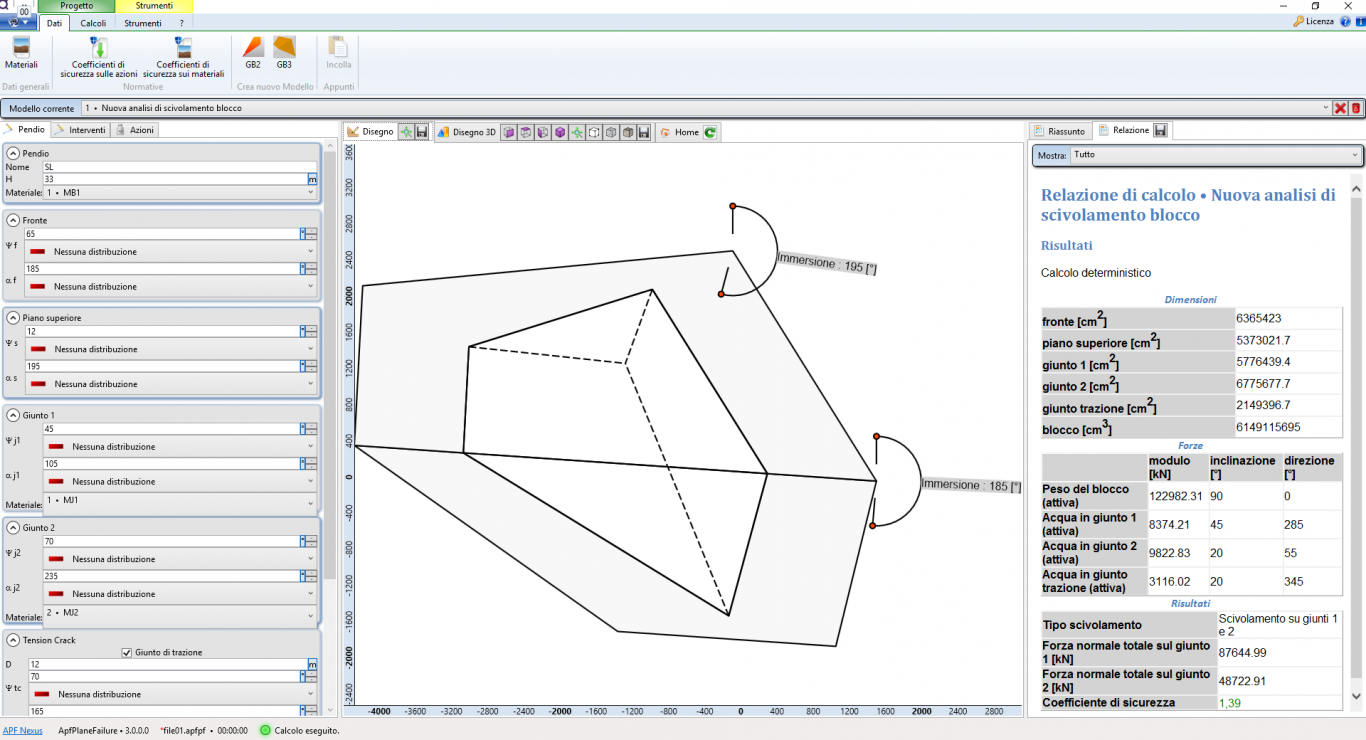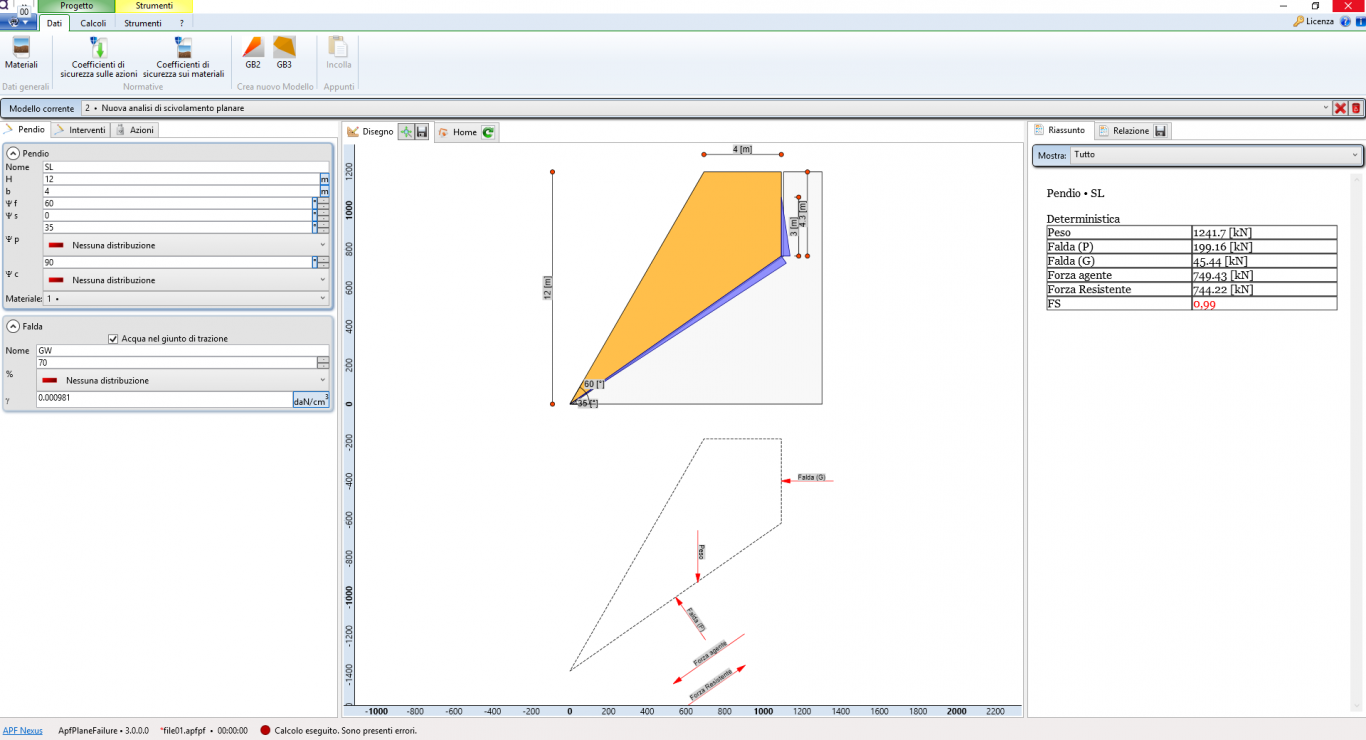APF PLANEFAILURE
New geotechnical analysis software for slope stability
NEW GEOTECHNICAL ANALYSIS SOFTWARE
Perform planar slope stability analysis and tridimensional wedge stability analysis, use deterministic or probabilistic method, design reinforcements
APF PlaneFailure lets you perform the analysis for plane failure in a rock slope (failure resulting from sliding on a single planar surface), and analysis of wedge stability (sliding of a wedge of rock defined by the intersection of two discontinuities) according to Eurocode 7 (EC7).
All you have to do is specify the geometrical conditions of the slope and tension crack, material properties, groundwater conditions, reinforcements.
APF PlaneFailure computes the factor of safety for plane failure and wedge failure by resolving all forces acting on the slope. The shape of the wedge is defined by the following surfaces: the slide plane(s), the upper slope, the slope face and a tension crack.
The factor of safety, includes cohesion, friction and water pressure, different shear strengths on the slide plane(s) with or without a tension crack. External forces, bolting forces (tensioned or passive anchors) and pseudo-static seismic force, acting on the wedge may be included in the analysis.
APF PlaneFailure warns you in case of unacceptable design of the rock slope
The results are displayed in the graphic environment and the user can save a detailed report with calculation details and images. The user interface is designed to simplify your work. You can change every value (slope height, dip of the sliding plane, etc.), recalculate and the results are immediately available.
You can adjust all the design variables, such as partial factors, material properties according to your needs (or the requirements of any National Standard or National annex to the Eurocodes).
APF PlaneFailure analyses a two-dimensional slope problem, and considers a slice of unit thickness, taken at right angles to the slope face. All the forces (weight of the sliding block, force due to water pressure, etc.) act through the centroid of the sliding mass.
The wedge geometry for the three-dimensional problem is defined by five surfaces, including a sloped upper surface and a tension crack. The external forces are vectors defined by their magnitude, and their plunge and trend. It is assumed that all forces act through the center of gravity of the wedge (there is no rotational slip or toppling).
The shear strength of the sliding surface is defined by cohesion and friction angle.

PLANEFAILURE
FEATIRES
Perform plane failure analysis and design reinforcements
- Planar rock slope stability analysis and design
- Wedge failure analysis and design of anchors
- Quick summary of safety factors
- Design is in accordance with Eurocode 7 (EN 1997-1:2004), all nationally determined parameters are editable
- Outputs figures and charts in JPEG or PNG
- Clear and easy to read report in HTML or DOCX
- Deterministic or probabilistic analysis
- Optional tension crack with water
- Optional seismic forcea
- Reinforcements: tensioned anchors or untensioned dowels
THE ANALYSIS FOR PLANE FAILURE TAKES INTO ACCOUNT:
- Material properties
- Ground water conditions
- Vertical or oblique tension crack
- Reinforcements (active, or passive)
- Pseudo-static seismic forces
The new releases are coded to be launched after the MicroSoft .NET 6.0 Desktop App installation that could be downloaded at this LINK.
Help
PDF copy of PlaneFailure's manual to professionals that need to manage sliding slope stability is available in the resource section.Updates
- Tridimensional wedge failure analysis
- You can export drawings to the DXF file formats
- You can now save and share common settings between applications: tables, document styles, eurocode parameters, ...
- Small changes to the user interface
- Streamlined, more intuitive user interface
- New version of report preview
- New file format
Software Requirements
- Windows 7
- Windows 8
- Windows 10
- Microsoft .NET 5.0
Hardware Requirements
- 1.0 GHz or faster processor
- 1 GB of RAM
- 1 GB of available hard disk space
- 5400 RPM hard drive
- DirectX 9-capable video card running at 1024 x 768 or higher display resolution




